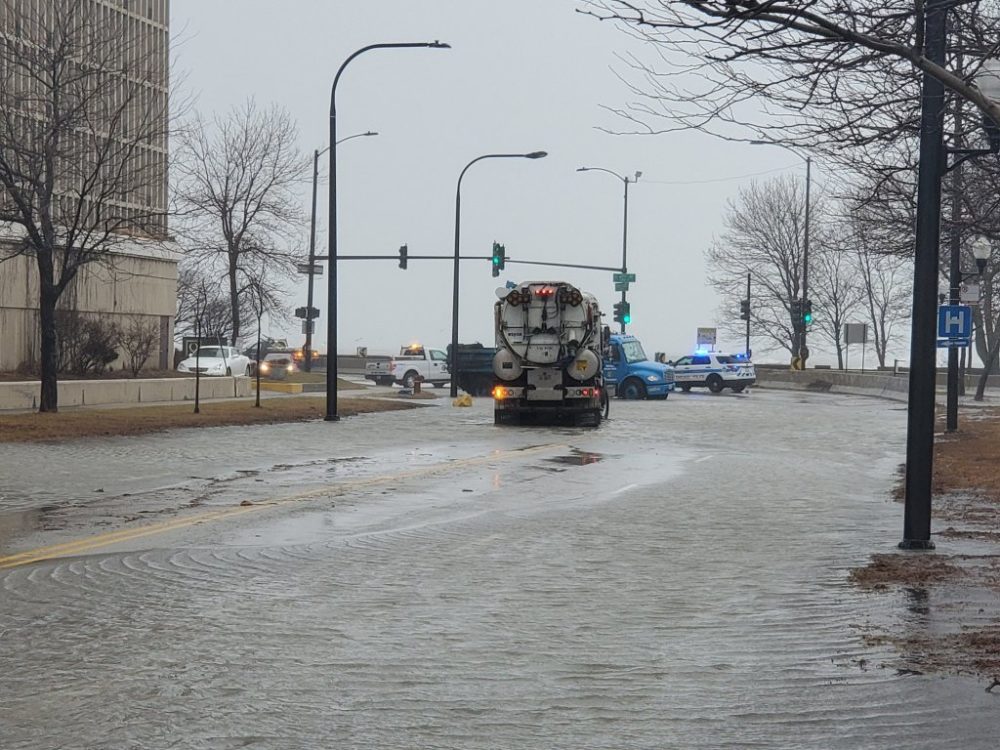Mayor Lori E. Lightfoot today issued a local disaster proclamation due to
significant flooding and major damage to the City of Chicago’s shoreline, infrastructure and
recreational areas as a result of severe weather on January 10-11, 2020. The proclamation
activates the City of Chicago’s emergency operations plan and authorizes the furnishing of
aid and assistance necessary to carry out the plan.
Today, Mayor Lightfoot sent a letter to Governor JB Pritzker requesting a state proclamation
for the City of Chicago, which would authorize the Illinois Emergency Management Agency
(IEMA) to coordinate State resources to assist in response and recovery as well as request
Federal resources and assistance. The Governor issued a state disaster proclamation for
Cook and Lake Counties to help communities recover from the storm, including substantial
property damage along more than 30 miles of the Lake Michigan shoreline. City personnel
will work closely with the State to gather, validate and document the information needed to
support a federal major disaster declaration.
“One of Chicago’s strongest assets is our lakeshore, and due to the severity of recent storms
we’ve witnessed irreparable damage to our lakefront beaches and infrastructure,” said
Mayor Lightfoot. “While the City has worked extensively over the past few months to
respond to the damage and to secure the infrastructure and beaches along our lake front – it
is clear that this is a challenge we can’t solve alone. To respond to the immediate challenges
facing our lakefront as highlighted by the storm on January 10-11, we have declared
disaster status to ensure Chicago receives the supports needed for addressing the scope of
this issue for the long term. We remain committed to working with all stakeholders at the
state and federal level in order to protect and preserve this vital piece of Chicago’s
landscape.”
The City of Chicago is currently working to remedy damage from the January storm, which
unleashed heavy rain, snow, ice, and localized flooding, followed by strong winds and
widespread lakeshore flooding. Gusting winds in excess of 50 mph brought large, battering
waves up to 23 feet high onto shoreline areas. The flooding from this storm resulted in full
and partial road and trail closures near the lakefront and substantial damage to Chicago’s
beaches and recreational areas along the shoreline.
According to the National Oceanic and Atmospheric Administration (NOAA), Lake Michigan
water levels will remain high over the next several months. Over the past several months,
the City has worked extensively to mitigate damage, prevent erosion and protect
infrastructure along Chicago’s North and South shorelines. The Chicago Department of
Transportation (CDOT), OEMC, the Chicago Park District and other City departments have
been coordinating closely with the US Army Corp of Engineers on these efforts.
In order to help the City better understand the full scope of shoreline vulnerability, CDOT
and the Park District have been working to gather data on the damage caused by recent
storms and potential future impacts on private property.
CDOT has installed more than 10,000 cubic yards of rip rap over the last two months at
Juneway, Howard and Rogers beaches on the far North Side to halt further damage and
erosion caused by the recent storms. CDOT and the Park District are also coordinating with
the Army Corps on a project to install rip rap from 48th to 50th streets starting in March.
In addition, the City has installed more than 5,000 feet of jersey barriers and 1,000 feet of
sandbags at sensitive locations on the North and South shorelines to protect roadways from
flooding during storms.
The Department of Water Management has also been supporting these efforts by ensuring
catch-basins are kept clear along the lakefront. This plus the concrete barriers and sandbags
are intended to stop the waves from flooding local streets, arterials such as Sheridan Road
and Lake Shore Drive and South Shore Drive.
# # #
Mayor Lightfoot issues local disaster proclamation for flooding along Chicago lakefront




